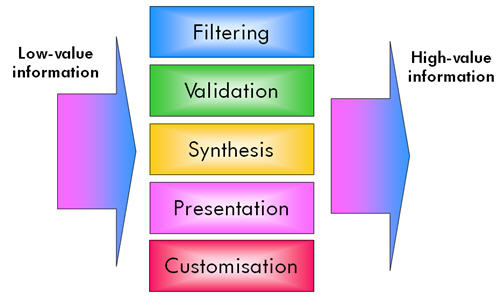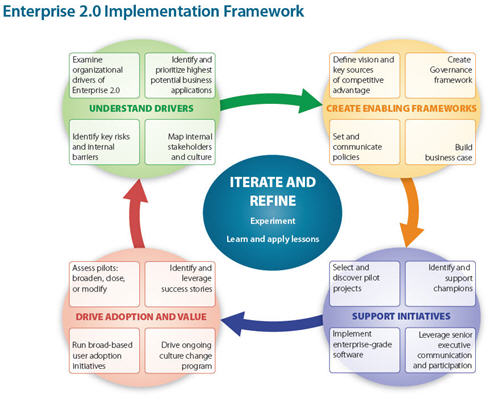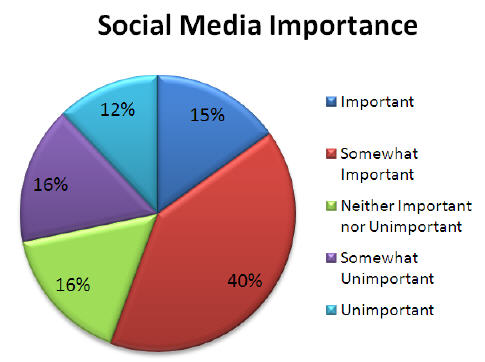6 Steps in Enterprise 2.0 Governance Projects
I believe that governance is at the heart of effective Enterprise 2.0 implementation. While many shy away at the term, mainly because governance is usually focused on risk and limitations, I see it differently. True governance is just as much about ensuring that opportunities are taken as it is as about containing risk. Governance, done well, is an enabler of innovation, providing parameters, guidelines and policies that address risks, and allow the greatest possible scope for experimentation and value creation.
As such most of my client work on Enterprise 2.0 is helping executives to frame governance and develop effective strategies. Advanced Human Technologies doesn’t do implementation; we work with partners for the nitty-gritty of larger projects. We believe that the greatest value creation is getting the frame right. Everything else flows from that.
The chapter on governance in my book Implementing Enterprise 2.0 is available for free download from the book website. However I thought it was also worth excerpting the chapter, as below. This section describes a typical Enterprise 2.0 governance process. Of course projects must be always tailored to the situation, addressing issues including organizational culture and existing processes.
SIX STEPS IN A TYPICAL GOVERNANCE PROCESS
1. Nominate a project leader and project sponsor
Creating a governance framework is a significant initiative that requires access to key stakeholders. A senior executive project sponsor should be named who will facilitate access to resources and people where required. The project leader can be either an internal manager with the appropriate skills and understanding of the organization, or an external consultant who has the benefit of independence from organizational politics.






